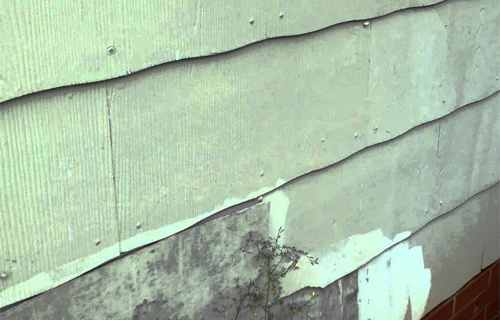Asbestos Siding Removal

Being a naturally occurring mineral that could be found in most of the mines in North America, asbestos gained massive popularity over the first decades of the 20th century for the way in which it helped the construction industry undergo a massive growth. Due to its resistance to fire and electricity, but also because of its durability, asbestos fibers were poured into building materials in order to make them fireproof and strong. This is how toxic asbestos made its way into the homes of Americans until the late 1970s when documented proof of the damaging effects the mineral had on the health of individuals forced regulations to be implemented in regard to its use.
The Danger of Asbestos
When encountered in its fiber form, the material is easily inhalable and once the hard, sharp particles enter the organism, the body has no natural defense against them. As a consequence, the fibers will create constant irritation and after a period of latency that could extend up to 50 years, a cancerous tumor could develop in the lining of the organ in which the asbestos got stuck, the most common of which are the lungs, the heart, and the abdomen. This is how thousands of Americans discover that they suffer from an asbestos-related disease such as lung cancer, asbestosis or mesothelioma, decades after they had been exposed.
Handling the Asbestos Siding on Your House
Even though asbestos has been banned for usage in the construction of houses, older buildings that had been built before the current law was implemented are highly likely to contain the toxic mineral in their infrastructure, as the legislation only aimed at preventing the further use of the substance, with no actions taken in the numerous cases in which it had become a part of people's living spaces.
Asbestos siding was basically a cement siding product that had asbestos fibers poured into it to increase strength. The result would be a product that did not rot or decompose and that would also be inaccessible to ants or termites, which is the reason why some asbestos items that were well attended over the years have stayed in good condition. However, if the siding on your house is visibly falling apart and you are considering reparations, you should first have samples tested for asbestos so that you know how to best approach the situation.
If you know for certain that the siding on your house contains asbestos then you should have a contractor authorized for asbestos removal assist you with your home project. They have the knowledge on how to handle asbestos siding without transforming your home into a hazardous environment in the process.
Do-It-Yourself Approach
It is, nonetheless, the case that many homeowners attempt to work with asbestos on their own. For your protection and the one of your family, you should gather as much information as possible before beginning to work with this toxic substance. Your main goal should be to create little to no dust since asbestos only becomes dangerous to those around it when it is released as fibers and, thus, it could be easily breathed in.
Therefore, you should avoid cutting or drilling into the siding, and instead remove it one piece by taking out the nail and then the pieces. Should you notice that the siding begins to crumble, you should wet the spot and then continue. Also, you should be careful in placing the siding on the disposal area without throwing it at the ground, and the pile of waste should also be kept wet to minimize the risks.
A few ways in which you could protect yourself while working with asbestos are the following:
- wear disposable coveralls, gloves, boots, and a HEPA respirator
- spread plastic sheets in the area in which you will be working
- have water and dish soap in a pump up sprayer on hand
- dispose of the waste at a landfill that handles toxic waste
